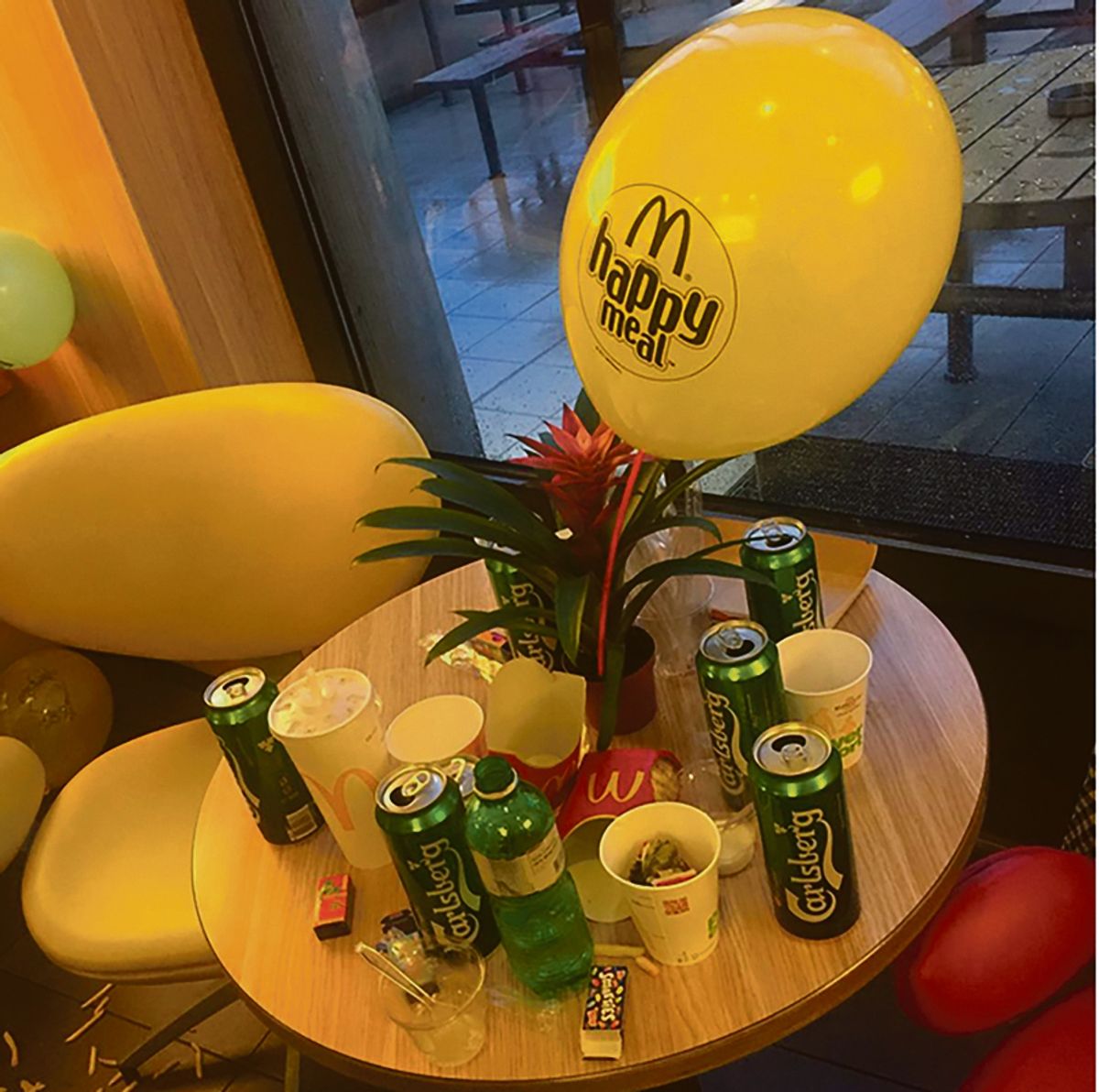They’re lovin’ it The New York Times recently reported that blue-chip Dominique Lévy gallery would celebrate the opening of Art Basel with a “circus-themed party created by a tightrope acrobat with ‘dinner under the big top’”. But New York’s Gavin Brown’s Enterprise and Brescia-based Galleria Massimo Minini offered a unique twist on the traditional swanky pre-Art Basel gallery dinners. The two dealers took over the Badischer Bahnhof McDonald’s, just down the street from the Messeplatz, to celebrate Massimo Minini’s 40th appearance at Art Basel and Gavin Brown’s 20th. Attendees dined on cheeseburgers and French fries, and, as this is Europe, there was also plenty of beer to be had (one or two of the galleries may have sneaked in vodka and rum to mix with their fizzy drinks). The dealer Maria Bernheim posted a photo of the event on Instagram with the tags #best #gallery #dinner #ever”.
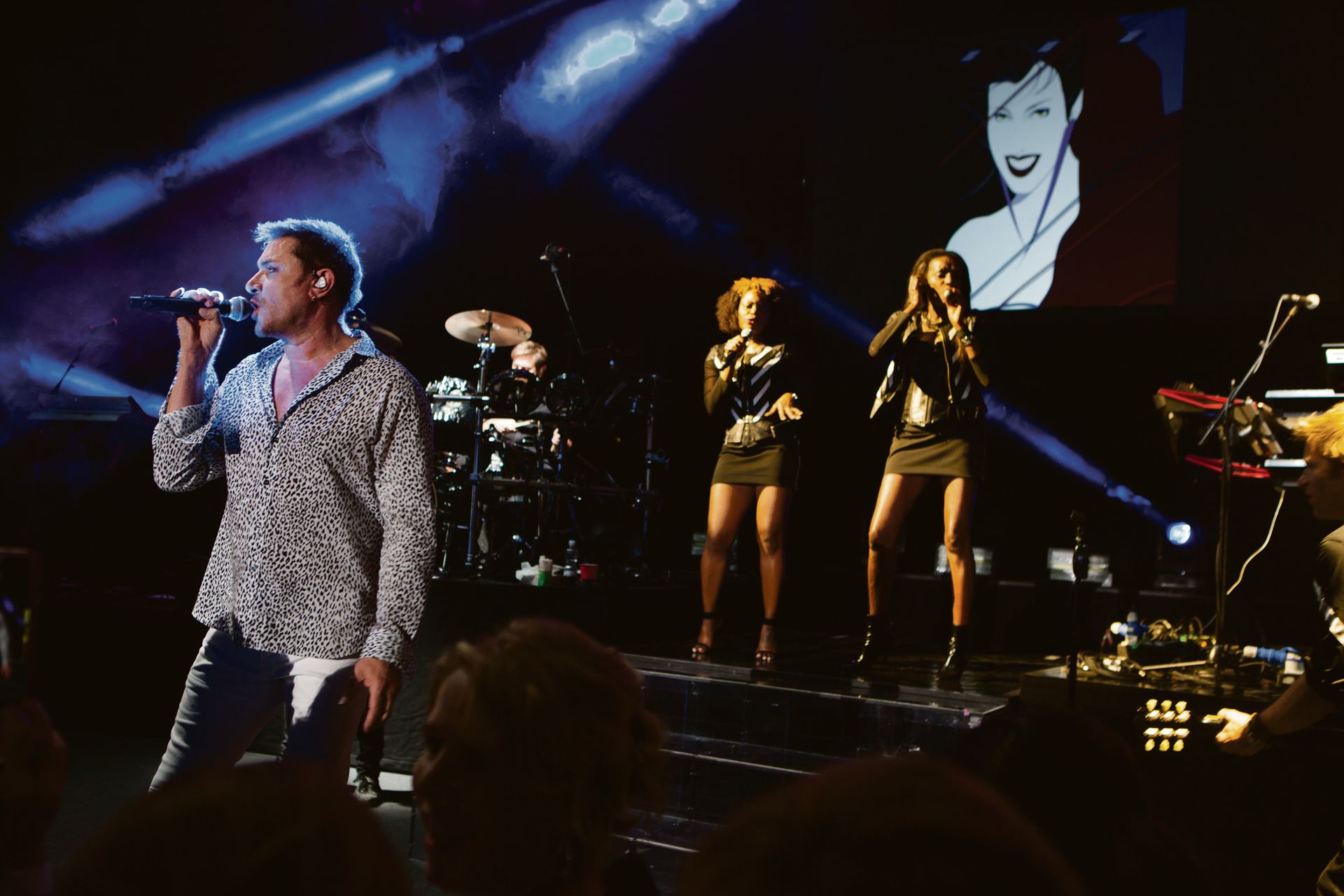
Duran Duran raise the roof at UN charity shindig The art world bopped along to a high-octane set by vintage 1980s popsters Duran Duran on Monday evening, after the UNAIDS gala dinner and auction held at Design Miami/Basel. The intergenerational audience got out of their seats to sing along to such catchy evergreens as Rio and Hungry Like the Wolf, following a frenzy of highly successful bidding to raise funds to increase access to HIV treatment services for women and children worldwide. Before the auction, Hollywood star Keanu Reeves took to the stage with the Los Angeles-based artist Alexandra Grant to perform Shadows; Reeves described it as “an existential piece that hopefully has some humour”, with the actor’s bittersweet words accompanied by Grant’s shadowy silhouette images. Then it was the job of auctioneer extraordinaire Simon de Pury to whip up everyone’s spirits as he entreated the high-end crowd, which included Mick Flick, Michael Chow, Rolf Sachs, Francesca von Habsburg, Craig Robins and Benedikt Taschen, to name but a few, “to open your hearts and open your purses” for an auction featuring one-off works by top designers, including the Haas Brothers, Daniel Libeskind and the Campana Brothers. All in all, the event was a hit, with a total of SFr1m raised during the evening.
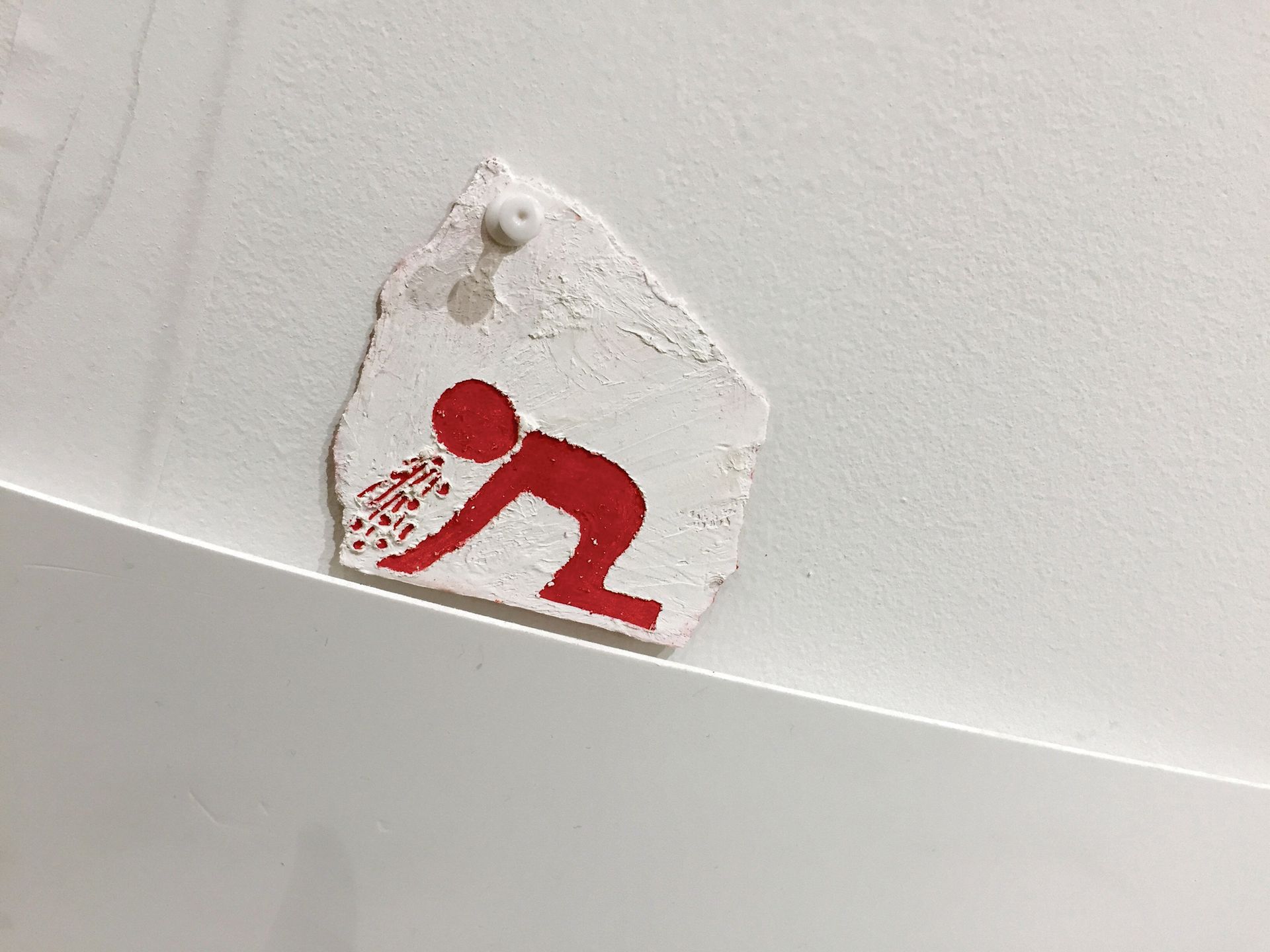
Throwing up a bargain Visitors rarely come to Art Basel in search of a bargain, but for those with sharp eyes, there is one to be found on the stand of London’s Thomas Dane Gallery. Along with an impressive, conspicuously displayed, large red-on-white drawing by Michael Landy, which pays homage to the Art Brut work of Jean Dubuffet and carries a price tag of £24,000, pinned to the wall at floor level is a much more modestly priced piece by the UK artist (whom we interview on pages 16-18), depicting a little red figure in a none-too-healthy state. This nauseous little fellow can be yours for a very unqueasy £200.
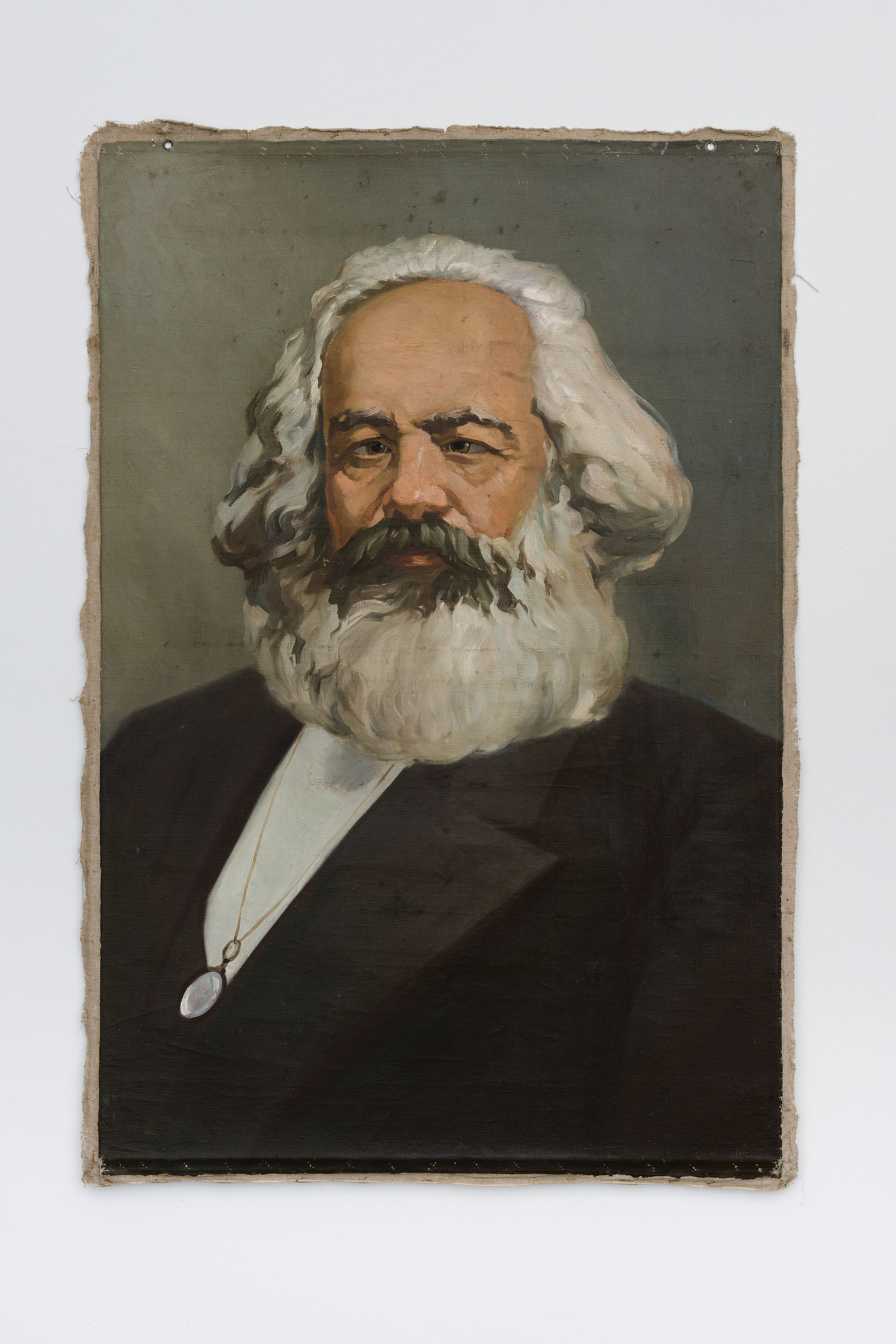
German artist gives Karl Marx a cheeky makeover—but no tan lines There is nothing more refreshing at an art fair than seeing a painting of Karl Marx with his eyes crossed. Thanks to the German artist Hans-Peter Feldmann, visitors to Art Basel will find a portrait of the founding father of Communism looking rather squiffy. Feldmann has a collection of original 19th-century oil paintings, mainly portraits, says a spokeswoman for Berlin’s Mehdi Chouakri gallery. “By gently painting over the pictures, Feldmann shifts the genre from a traditional depiction to a Postmodern caricature, adding, for instance, clown noses or crossed eyes to the faces, as well as bikini tan lines to the nudes.” Thankfully, Marx suffers no such indignity.
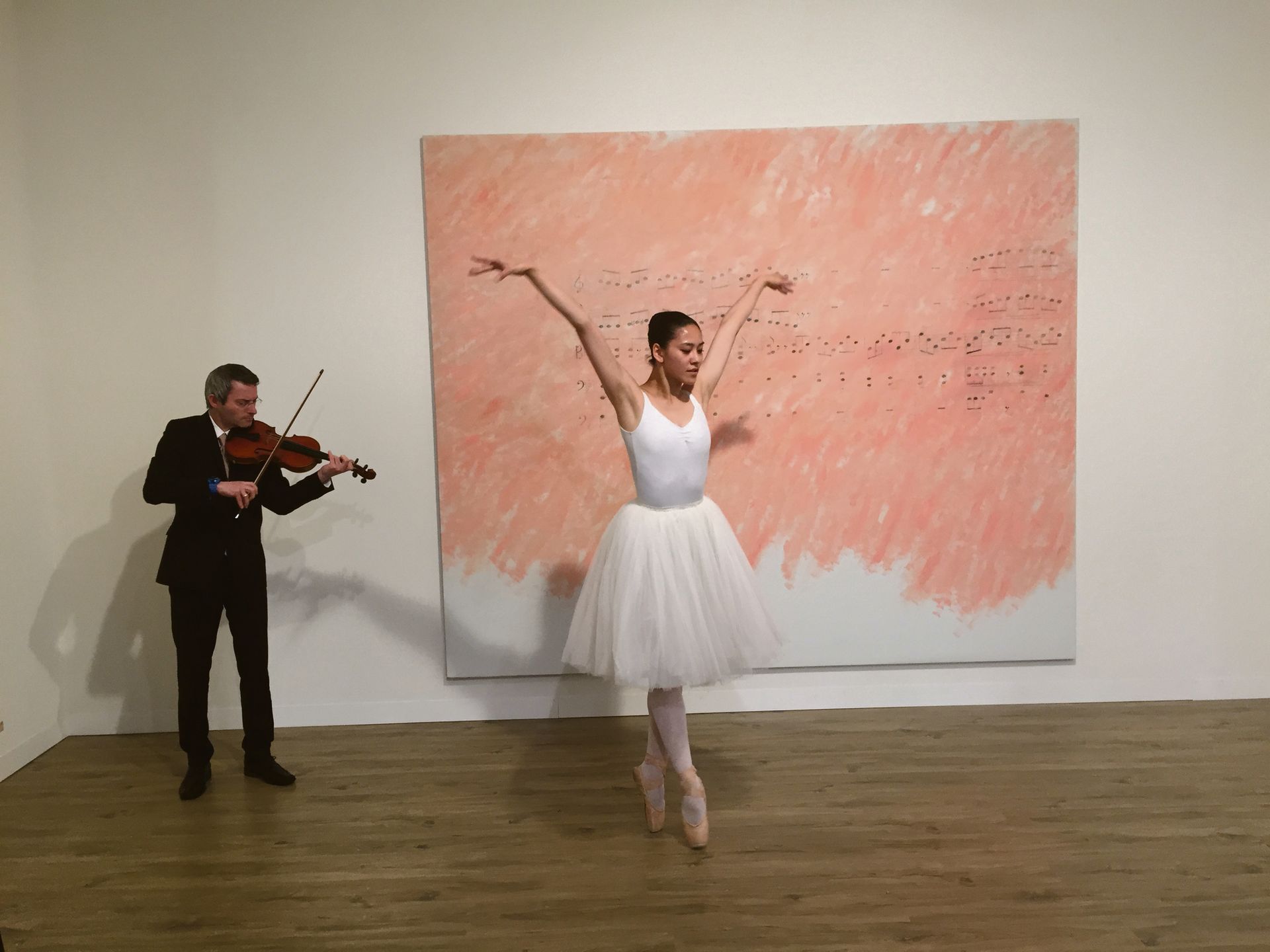
Basel ballet The lilting sound of a violin playing a passage from Stravinsky’s Pulcinella suite is not what you’d normally expect to hear drifting through the ground floor of Art Basel’s Messe. But at regular intervals throughout the fair, Luxembourg & Dayan’s stand is playing host to the Greek artist Jannis Kounellis’s 1972 work Da inventare sul posto (to invent on the spot). For 15 minutes at a time, a violinist repeatedly plays the fragment of the Stravinsky score that is written across a pink-painted canvas hanging on the wall, while a ballerina dances her own multiple improvised interpretations of the music. One of art history’s most elegant live works, it is a calming and civilising respite from the surrounding cacophony.


